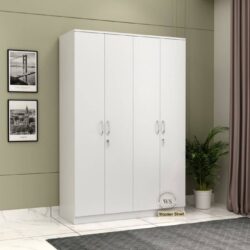When it comes to headwear, two popular options often come up: the neck gaiter for men and the neck gaiter headband. While both are designed to offer comfort, style, and protection, they serve slightly different purposes and are constructed in unique ways. In this blog post, we’ll explore the key differences between a neck gaiter and a headband, helping you make an informed decision on which one suits your needs.
1. What is a Neck Gaiter?
A neck gaiter is a versatile piece of clothing typically made from stretchy, breathable fabric that covers the neck and can be pulled over the face for added protection. Commonly used by outdoor enthusiasts, athletes, and workers in cold environments, neck gaiters are known for their multi-functional use.
Unlike a scarf, a neck gaiter is a continuous loop of fabric that fits snugly around the neck. It’s designed to offer warmth, comfort, and protection from the elements. Many neck gaiters for men are made from materials like fleece, merino wool, or synthetic fabrics, offering different levels of insulation and breathability.
2. What is a Neck Gaiter Headband?
The neck gaiter headband is essentially a neck gaiter that can be worn around the head, often used to keep hair back or absorb sweat. These headbands are typically made from similar materials to neck gaiters but are designed with a narrower, more compact shape.
A neck gaiter headband offers a different type of functionality, focusing primarily on sweat management, keeping hair in place, and sometimes offering light warmth. Unlike a full-neck gaiter, a headband is worn on the head and is often used in sports like running, cycling, or working out. The material is often lightweight and moisture-wicking, perfect for high-intensity activities.
3. Key Differences in Functionality
The most obvious difference between a neck gaiter for men and a neck gaiter headband is their intended use. A neck gaiter is primarily designed to cover the neck, and it’s most commonly worn to keep the neck warm, shield the face from sun or wind, or provide extra protection in colder climates. It can also be pulled up to cover the face in extreme weather conditions.
On the other hand, a neck gaiter headband is smaller and is often used for more specific purposes, like absorbing sweat or keeping the hair out of the face. It’s a versatile piece that’s ideal for athletes, especially in warmer climates, as it’s lightweight and breathable.
4. Material Considerations: Neck Gaiter vs. Headband
Both neck gaiters and neck gaiter headbands come in various materials, each designed to offer comfort, breathability, and durability. For neck gaiters for men, you’ll often find thicker materials like fleece, merino wool, or thermal fabrics, which provide insulation against the cold.
In contrast, neck gaiter headbands are typically made from lighter, moisture-wicking fabrics like cotton, polyester, or nylon. These materials are excellent at absorbing sweat, making them the perfect choice for high-intensity activities or warmer climates. When choosing between the two, consider what activities you’ll be doing and the weather conditions you’ll be facing.
5. Versatility: How to Wear Each Item
While both the neck gaiter and the neck gaiter headband offer versatility, they serve different purposes in day-to-day wear. A neck gaiter can be worn in multiple ways—around the neck, pulled over the face, or even as a head covering for extra warmth.
Meanwhile, a neck gaiter headband is designed primarily for wearing around the head. It can also be used as a wristband or even a hair tie for a sporty look. The flexibility of a neck gaiter headband is evident in its ability to be worn during activities like running, hiking, and cycling, where both functionality and breathability are paramount.
6. Which One is Better for Cold Weather?
When it comes to cold weather protection, the traditional neck gaiter has the upper hand. Neck gaiters for men are often made with thicker fabrics that are better suited for providing warmth. These can be pulled over the face to protect against harsh winds, snow, or even biting cold temperatures.
On the other hand, neck gaiter headbands are typically thinner and offer less insulation. While they can still provide some warmth around the head, they’re not as effective at protecting the neck or face in cold weather. Therefore, if you’re planning to face harsh winter conditions, a neck gaiter is your best option.
7. How to Choose the Right Option
Choosing between a neck gaiter and a neck gaiter headband depends on your specific needs. If you’re looking for something versatile that offers full coverage for your neck and face, especially for outdoor activities in cold weather, a neck gaiter is the better choice.
However, if you’re engaging in sports or high-intensity activities and need a headband to keep sweat at bay or to manage your hair, a neck gaiter headband is ideal. Both options are lightweight, portable, and easy to carry, making them perfect for a variety of activities.
8. Which One is More Comfortable?
Comfort is subjective, but both neck gaiters and neck gaiter headbands are designed to be comfortable. Neck gaiters for men are generally stretchy and soft, offering a snug fit that doesn’t feel restrictive. The material options, such as merino wool or fleece, ensure that comfort doesn’t come at the cost of warmth.
Neck gaiter headbands, due to their lighter design, are generally more breathable and less likely to cause overheating during intense physical activity. If you prioritize comfort during exercise or warm weather, the headband may feel less bulky and more suitable for your needs.
9. Conclusion: Which One Should You Choose?
Ultimately, both the neck gaiter for men and the neck gaiter headband serve distinct purposes. If you’re looking for something that provides all-around protection from the elements, especially for cold weather or outdoor adventures, a neck gaiter is your best bet. However, if you’re seeking something light, breathable, and designed for high-intensity activities or warmer weather, the neck gaiter headband is the ideal choice.
By understanding the differences between the two, you can select the option that best suits your lifestyle and activities. Whether you need warmth, sweat absorption, or versatility, both accessories offer valuable features that make them essential parts of any wardrobe.




